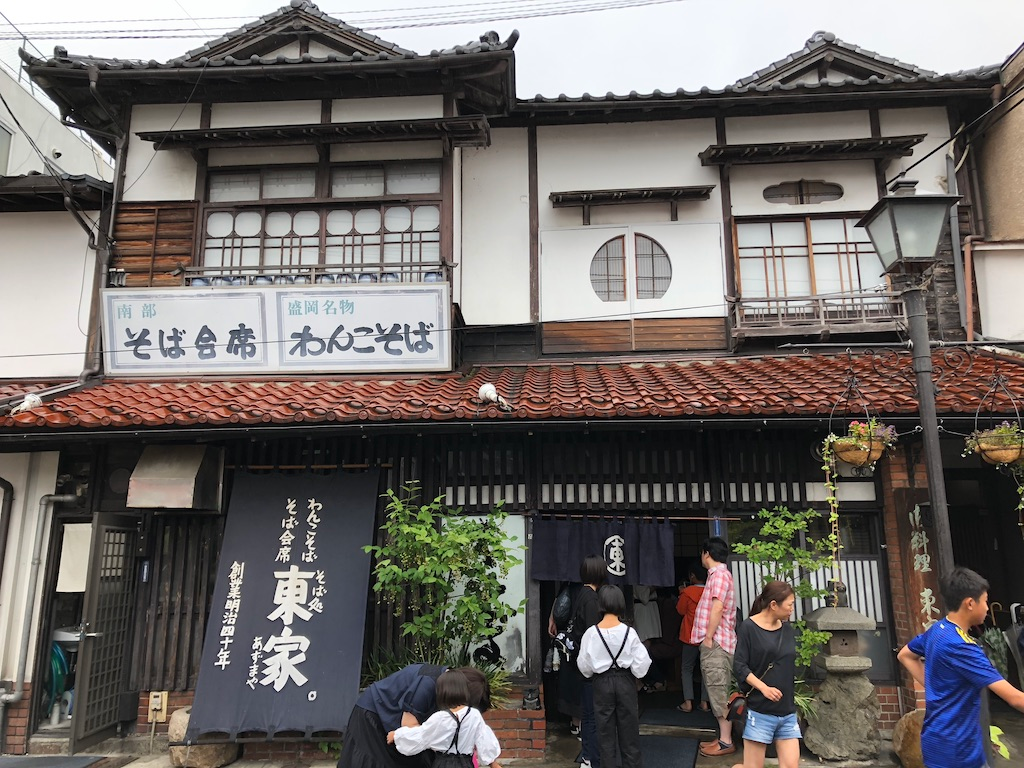Wanko Soba Is Japan's Gonzo All-You-Can-Eat Noodle Challenge
It's at around bowl number 40 that I start to slow down, but our server, a somber teen who's probably all of 15 years old, is without mercy. "Hai, jan-jan! Don-don!" she says, slapping down a new bowl every time I clean out the one in front of me. Her words, our guide explains to me, roughly translate as "okay, more, more!" and are as much an encouragement as they are a taunt.
This is wanko soba, a Japanese all-you-can-eat extravaganza where individual mouth-sized portions of soba (a thin square Japanese noodle made from buckwheat) are served to you in rapid succession. Save for when the server departs to get more noodles, there is no break, no respite from the noodley fury you've signed up for, and in a surprisingly short amount of time the small red-and-black lacquered wooden bowls that the soba is served in begin towering around you, a testament to your ability to scarf down one of Japan's most gonzo feasts.
"Wanko soba is so rough and ready. It's a very different experience of Japanese food," says Jess Hallams, the Tour Development Director at Tohoku Local Secret Tours. Originally from Australia, as a Japanese tourism specialist Hallams has dedicated herself to Tohoku, the northernmost region of the main Japanese island, Honshu. Wanko soba was born in this region (in the prefecture of Iwate) and is one of the more surprising foods visitors encounter.
Hallams tells me that soba is a beloved food in the region, but that being crushed by food in a generally raucous setting is also part of the fun. While casual restaurants specializing in dishes like ramen and donburi have proliferated around the world, many people outside of Japan still expect the cuisine to adhere to the tenets of washoku (traditional Japanese cooking), where meals are calm to the point of being serene, dishes are elegantly plated, and, explains Hallams, "the plates, the table servings, everything is connected." Wanko soba restaurants, on the other hand, are filled with families celebrating birthdays or milestones, and kids in particular seem to go nuts for the meal. It's strictly informal, and the staff gives you a bib to wear before you start eating, something they definitely don't do at washoku restaurants.
The wanko soba experience works like this: Almost immediately after you've been seated, the table in front of you is laden with yakumi, a variety of condiments and small side dishes that accompany your soba. While the main attraction is the soba, yakumi provide contrast by adding different flavors and textures, and could conceptually be compared to the role banchan play in Korean cuisine. Yakumi may vary from season to season, but you can generally expect tuna sashimi; nameko mushrooms (a thin, brown variety with a slimy, quasi-gelatinous texture) served with grated daikon radish that's been simmered with soy sauce; sesame paste; cooked minced chicken; sliced spring onions; wasabi paste; grated taro; various seaweeds; at least one type of local pickle; and a dessert.
The soba itself is served in small hand-sized bowls, each of which contains one mouthful of noodles. While it's acceptable to dip into the side dishes to accompany your noodles, and to drink of the mentsuyu (noodle broth) that goes with the soba, the goal here is to hork down noodles as fast as you possibly can while your server goads you on. Increasing the pressure is the fact that the tray of bowls is never placed on the table; instead, your server continues to hold it as you eat, a constant reminder that if you are slow (and, one can only assume, weak), her own physical well-being suffers.
This punishing setup is actually a significant part of what makes the experience so worthwhile. "I really enjoy the waitress as she stands over you and says with a kind, smiling voice, 'Hai, jan-jan! Don-don,'" says Hallams, "because, really, she's forcing you. She's relentless, absolutely relentless, and suddenly a soba fever comes over you and you've eaten over a hundred bowls."
The two best cities to try wanko soba are Morioka and Hanamaki, and the restaurant that is perhaps the best known (and the one Hallams prefers) is Azumaya. Dining in Japan often means walking into restaurants with no English-speaking servers (or English-printed menus), but Azumaya is known for being welcoming to international visitors and for making an effort to accommodate dietary restrictions. They even serve a vegan-friendly version of their broth, which is typically made with bonito flakes, a type of dried, thinly shaved preserved fish.
Fifteen bowls of wanko soba is equal to one regular-sized serving, and Azumaya rewards you with a certificate of achievement if you're able to make it through 100 bowls or more. While I was granted a certificate certifying how much I ate (as well as a small wooden ornament), my own record is a paltry 62, and Hallams says that on her best day she was able to put down 111. The world record, held by a woman from Morioka, is 570.

"It's not a fancy meal, but it's still satisfying for many other reasons," Hallams says. And unlike buffets in the U.S., which often feature food that is heavy, starchy, and calorie-dense, wanko soba is light and fresh enough to leave you feeling surprisingly decent afterwards. While I definitely wasn't ready to do anything strenuous after my 62 bowls, I also didn't feel like I needed to be rolled out on a stretcher. And I felt a funny sense of accomplishment when I got my certificate, which now rests above my desk, reminding me of one of the more unique meals I've ever had.
